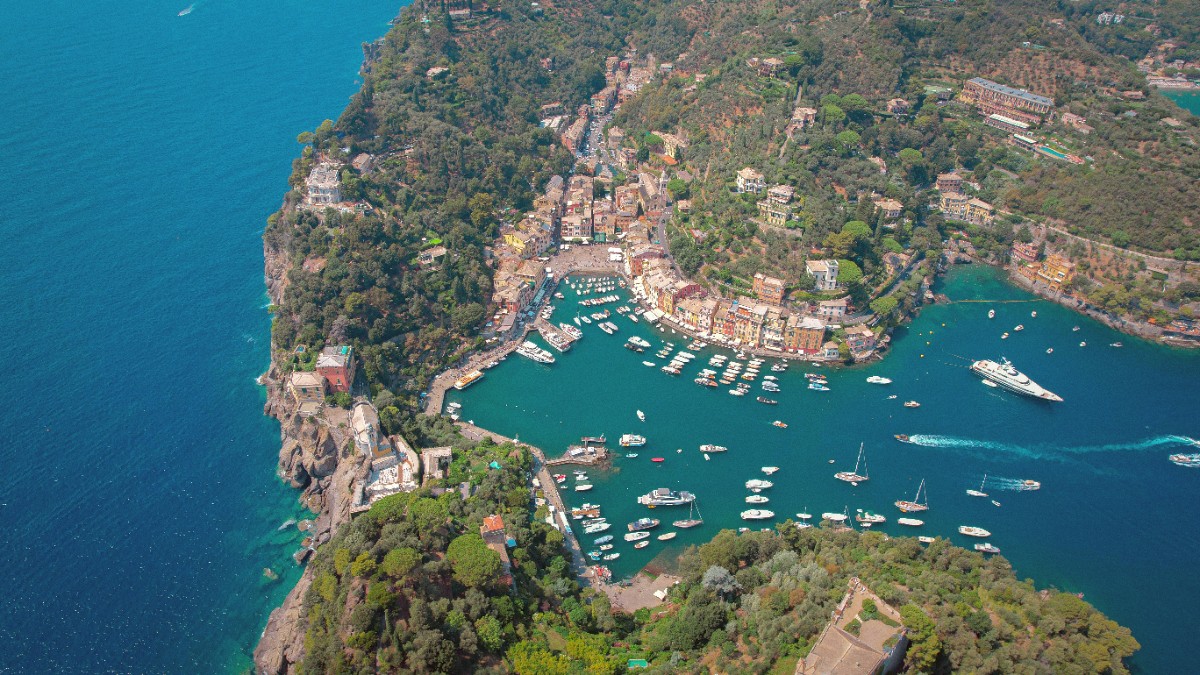
Liguria Piedmont And Valle Daosta, Italy
Portofino experiences a Mediterranean climate, characterized by distinct seasonal patterns.
Ideal timing for specific activities varies: Hiking in Spring/Autumn, Swimming/Boating in Summer, and Budget Travel in Low Season. Stay informed on marine forecasts due to occasional strong winds, and be aware of heavy rainfall in Autumn which could lead to landslides.
Whether you seek warm weather for water activities or a serene, budget-friendly escape, each period holds unique characteristics. Peak season offers full services but high costs, while shoulder seasons strike a balance. Low season provides tranquility and value, though with limited availability of tourist services.
June - August
Warm weather, full tourist services, long daylight hours.
Extreme crowds, highest prices, intense heat/humidity.
April - May, September - October
Pleasant temperatures, fewer crowds, moderate prices, beautiful landscape.
Limited hours for some businesses, gradually cooling sea.
November - March
Few tourists, lowest prices, serene atmosphere.
Many closures, limited activities, unpredictable weather.
Occasional strong winds, like the cold, dry Mistral or the warm, humid Scirocco from North Africa, can impact sea conditions. These winds may create choppy waters and affect ferry schedules, especially during winter. Staying informed about marine forecasts is important if boat excursions are part of your plans.
Autumn months, especially October and November, can experience intense, localized rainfall. This heavy precipitation may lead to flash floods in low-lying areas or, more commonly, trigger landslides on the steep coastal slopes of the Portofino Promontory. Authorities monitor these conditions and close hiking paths when necessary for public safety. Check local weather reports before heading out on trails during wet periods.
Spring (April-May) and early Autumn (September-October) offer comfortable temperatures.
Summer (July-August) presents the warmest sea temperatures.
Shoulder seasons present fewer crowds for unobstructed shots.
Low season (November-March) offers the best value for accommodation and flights.
Any season, but low season offers a serene, authentic local feel.
Italy is a member of the Schengen Area, with entry procedures for various nationalities.
Italy belongs to the Schengen Area, a zone of 27 European countries without internal border control. Non-EU/EEA/Swiss citizens may need a Schengen visa for short stays (up to 90 days within 180-day period) for tourism, business, or family visits. Citizens from countries like the US, Canada, Australia, and New Zealand do not need a visa for short stays. For stays over 90 days (study, work, residency), a national long-stay visa (Type D) is mandatory, applied for at the Italian embassy/consulate.
If a Schengen visa is needed, applications are made at the Italian embassy or consulate in your country of residence. Starting the process several months before your trip is advisable, as processing times vary.
Portofino is renowned for its exclusivity, which often translates to higher costs.
| Currency | ATMs (Bancomat) | Card Payments |
|---|---|---|
| Euro (€) | Widely available in Santa Margherita Ligure/Rapallo, limited in Portofino. | Visa/Mastercard widely accepted in hotels, restaurants, shops. |
| Cash Use | Small amounts for minor purchases or tips. | Preferred for most larger transactions. |
| Travel Wallet | An universal Travel wallet organizes currency and cards securely. | Facilitates secure management of payment methods. |
No specific vaccinations are generally required for entry to Italy. Keep routine vaccinations current (MMR, DTP, Polio, Flu). Consult a healthcare professional 4-6 weeks before travel for personalized advice.
Mediterranean sun can be intense. Use Broad-spectrum sunscreen SPF 50+, wear a Wide-brimmed hat and Sunglasses. Seek shade during peak sun hours (11 AM - 3 PM).
Drink plenty of water. Carry a Reusable insulated water bottle and refill often.
Portofino's terrain with cobblestone streets and uneven hiking paths may lead to trips or falls.
Wear comfortable, Supportive walking shoes. Carry a Small travel first aid kit with bandages, antiseptic wipes, pain relievers like Ibuprofen or Acetaminophen, and Anti-diarrhea medication.
Jellyfish stings are rare but possible. Look for warning flags at beaches. If stung, rinse with seawater and seek local advice if symptoms persist.
Source: Adventure Medical Kits, LifeStraw
Italy has a public healthcare system (SSN). EU citizens use EHIC. Non-EU citizens should have comprehensive Travel medical insurance.
Identifiable by a green cross, available in Portofino (limited hours) and Santa Margherita Ligure.
Nearest major facilities are in Lavagna (Ospedale di Lavagna) and Genoa.
Portofino is generally very safe with low crime rates. Petty crime, like pickpocketing, can occur in crowded areas. Natural disaster risks include localized flooding from heavy rainfall and landslides on steep coastal terrain. Italy is in a seismic zone, but strong earthquakes are rare in Liguria.
Comprehensive travel insurance is strongly advised for any trip to Portofino, covering medical emergencies, trip cancellation, and lost luggage. Tap water in Portofino is generally safe to drink.
Covers medical emergencies, trip cancellation/interruption, lost/stolen luggage, and personal liability. Providers include World Nomads, SafetyWing, and Insubuy.
Tap water is generally safe to drink. Look for "acqua non potabile" signs if in doubt. Bringing a reusable water bottle for refills is a good practice.
Italy maintains high standards for food hygiene. Eating at reputable establishments is recommended. Fresh produce and seafood are typically handled with care.